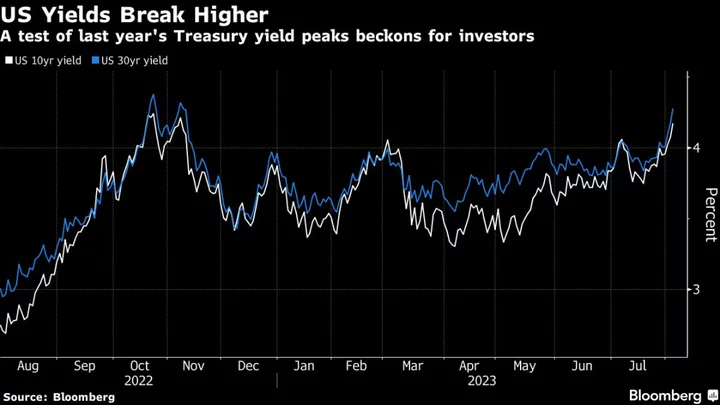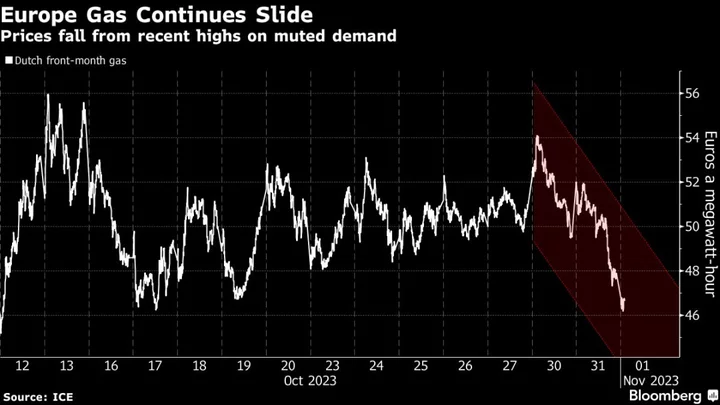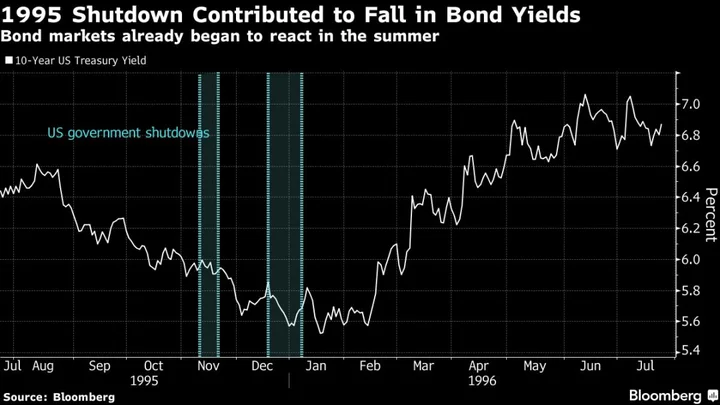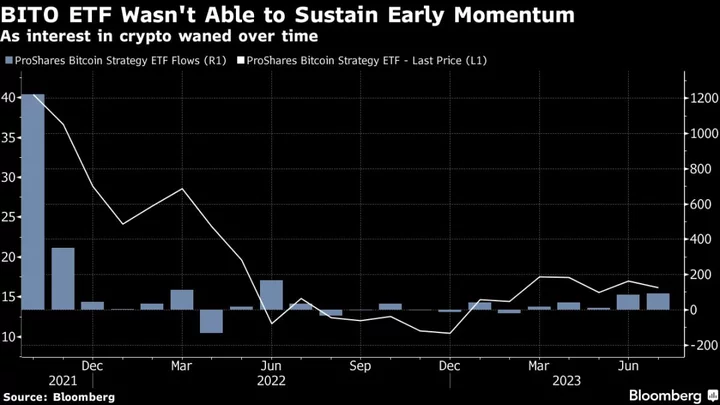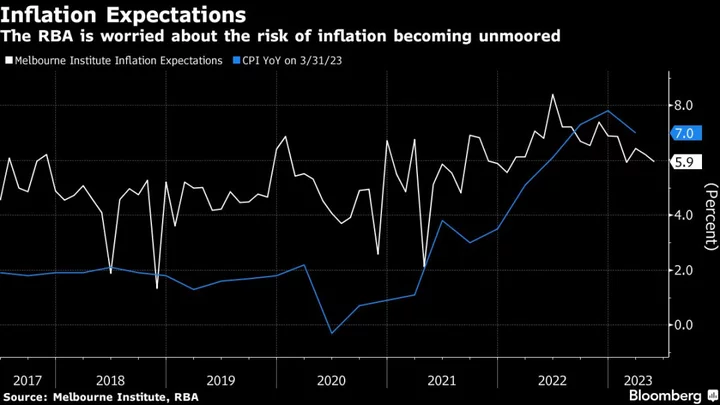Stocks in Asia are set for a mixed open following a slump in US equities and bonds, as focus shifts to Friday’s jobs report for clues on the outlook for the Federal Reserve’s next steps.
Futures for benchmark indexes in Japan pointed to a decline, while those for Australia were little changed and Hong Kong were set to rise. The S&P 500 and the Nasdaq 100 both declined a third day, setting them on a course for their worst weeks since mid-March. In late US trading, a $207 billion exchange-traded fund tracking the Nasdaq 100 (QQQ) whipsawed as Amazon.com Inc. gained more than 10% in postmarket trading following a bullish revenue forecast while Apple Inc. reported disappointing iPhone sales.
Another slide in longer-dated Treasuries put them on pace for their worst week of 2023 amid signs of unexpected economic strength and concern over a widening budget deficit. New Zealand bonds tracked the move on Friday, with 10-year yields rising at least 5 basis points. A Bloomberg gauge of the dollar pared gains to be little changed.
A report Thursday underscored resilient US demand for workers, while separate numbers showed productivity jumped the most since 2020, blunting labor costs. Those figures preceded the government’s employment data — forecast to show the US added 200,000 jobs in July. While that would be the weakest print since the end of 2020, it’s still a strong advance historically.
“The good news is that almost everyone agrees that an imminent recession isn’t very likely,” said Ed Yardeni, founder of his namesake research firm. “That reduces the downside concerns about corporate earnings, but it increases the downside potential for the stock market’s valuation multiple if the bond yield continues to rise.”
Bill Ackman, founder of Pershing Square Capital Management, said he’s short 30-year Treasuries “in size” — as both a hedge against the impact of higher long-term rates on stocks and also as a standalone bet. Bill Gross, the one-time king of the bond world, noted he’s “overall bearish” on 10-year yields, while Berkshire Hathaway Inc. Chairman Warren Buffett told CNBC he had been buying Treasury bills and would likely continue. Tesla Inc.’s chief Elon Musk said that short-term T-bills are “a no-brainer.”
Jobs Report
A survey conducted by 22V Research shows that investors expect Friday’s jobs figures to show strong employment and weak wage inflation.
Roughly 65% of respondents are betting payrolls will be greater than consensus. Meantime, 55% expect average hourly earnings to trail estimates — which helps explain why they also expect the equity-market reaction to be muted, the firm noted.
To Jason Draho at UBS Global Wealth Management, markets may actually be listless for the next month in the absence of any significant catalyst and after a strong run.
“Markets are already pricing in a soft landing, and increasingly with the belief that relatively little growth pain is required for inflation to gradually return to 2%,” Draho noted. “The markets are vulnerable to any signs that the economy, with the Fed’s steering, is at risk of not sticking to that soft landing.”
READ: Bond Market on the Ropes Confronts Risk of Pivotal Jobs Report
Steeper Yield Curve
Meantime, rate options traders are paying through the nose for protection against further increases in long-maturity Treasury yields.
A metric that compares demand for bearish put options to demand for bullish call options shows the widest divergence since September for options on CME Group Inc.’s US Treasury Bond Futures contract, which currently tracks a bond that matures in 2039. The gaps are less extreme for options on shorter-maturity Treasury futures.
The steepening of the yield curve extended a trend since the Bank of Japan surprised markets last week with a policy tweak. At 4.88%, two-year yields are 71 basis points higher than those on the 10-year note. That’s compared to a gap of 102 basis points two weeks ago.
“I remain wary of taking duration risks and still much prefer short duration bonds,” said Peter Boockvar, author of the Boock Report. “This sovereign bond bubble continues to unwind and the problem now is higher rates just exacerbates the sovereign debt rise as interest expense starts to explode higher, everywhere, not just in the US, highlighted by the Fitch downgrade.”
Elsewhere, oil rose after Saudi Arabia prolonged its unilateral production cut by another month and hinted that deeper reductions may be on the way, putting futures on course for their sixth weekly advance and adding to inflationary pressure.
Some of the main moves in markets:
Stocks
- S&P 500 futures were little changed as of 7:20 a.m. Tokyo time. The S&P 500 fell 0.3%
- Nasdaq 100 futures were little changed. The Nasdaq 100 fell 0.1%
- Nikkei 225 futures fell 0.9%
- Hang Seng futures rose 1.3%
- S&P/ASX 200 futures were little changed
Currencies
- The Bloomberg Dollar Spot Index was little changed
- The euro was little changed at $1.0951
- The Japanese yen was little changed at 142.53 per dollar
- The offshore yuan was little changed at 7.1795 per dollar
- The Australian dollar was little changed at $0.6553
Cryptocurrencies
- Bitcoin fell 0.4% to $29,174.34
- Ether fell 0.6% to $1,832.21
Bonds
- The yield on 10-year Treasuries advanced 10 basis points to 4.18%
Commodities
- West Texas Intermediate crude rose 0.3% to $81.76 a barrel
- Spot gold was little changed
This story was produced with the assistance of Bloomberg Automation.

